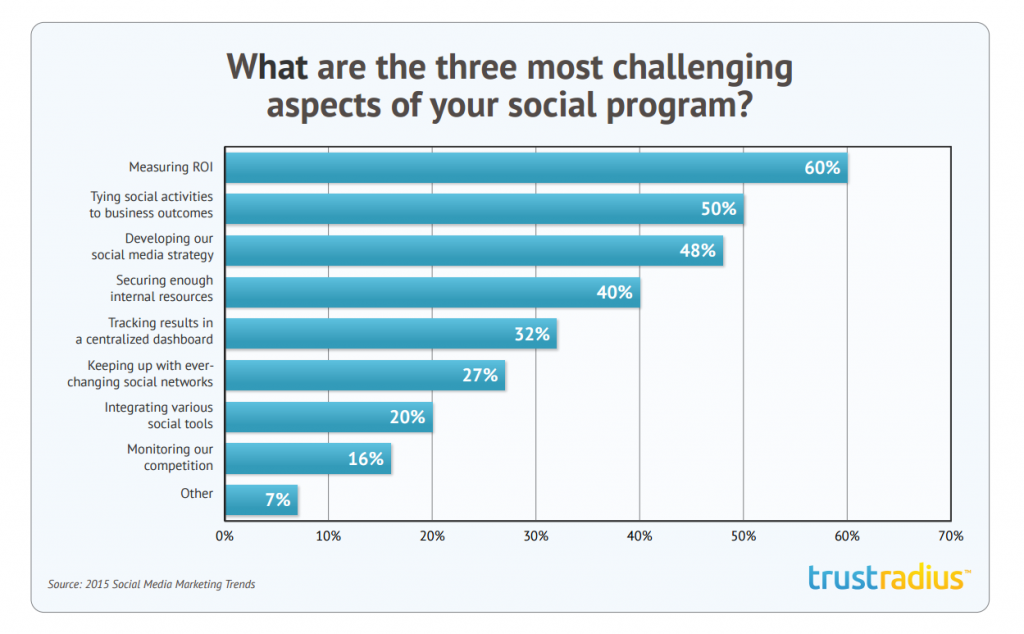So you want to know what keeps many social media marketers up at night?
Return on investment.
That’s right. According to new research, 60 percent of social media marketers surveyed said that measuring the ROI of their digital programs is their #1 challenge. Slotting in next: tying social activities to business outcomes and developing a social media strategy.
It’s really not this difficult.

All communications activities, whether a traditional ad campaign, a blog strategy, or a booth at a trade show, have to have a purpose. (Well, they don’t have to. But they should.) That purpose should be tied to something that your organization is trying to achieve. Are you trying to sell a product? Recruit new employees? Educate consumers? Build momentum for a cause?
This isn’t rocket science. Define what needle you’re trying to move. Define what success looks like (short term and longer term). Identify what strategies and tactics can help you achieve that goal. Measure your progress.
Marketing is secondary.
The 2015 Social Media Marketing Trends report also has some interesting data on social media goals. For example, approximately 50 percent of marketers working in small and mid-sized companies say that driving Web site traffic is their #2 goal (behind brand awareness). Okay. But why?
Getting more eyeballs on your Web site might be tactically valuable (assuming they are the right eyeballs), but what do you want people to do once they get there?
Similarly, many of the marketers surveyed opt for starter social media metrics. Not just Web site traffic, but also audience size, “likes,” and shares. Only 32 percent of those surveyed rated generating leads as a top metric; even fewer (24 percent) rated revenue as a top metric.
As the report notes: “Social media strategy [is] not aligned with overall business.”
No wonder there’s an ROI problem.
Good marketing doesn’t happen in a vacuum. Tie your program to business goals, and the ROI should follow.



